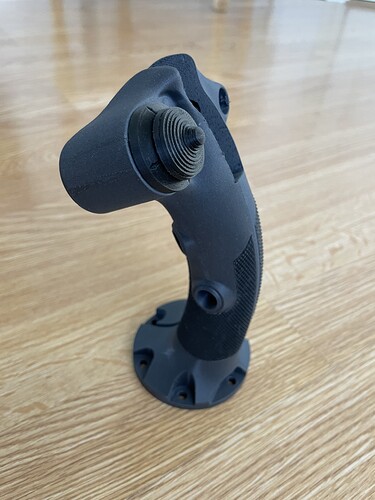The 3D printer I got came highly recommended by @Fridge and it has not let me down. It’s one of the best filament printers available, but that doesn’t mean that there aren’t issues that you need to overcome, every once in a while.
When printing the left side knurling, I ran into trouble with the corners.
This happens because I’m printing the object slanted at 45° to get a better definition on the knurls. A filament printer, like mine, prints in layers. Any 3D object you want to print must be converted to layers and then a trace pattern of how the printer shall lay down its string of plastic. You get the best result if the printer can string the plastic continously. Think of every knurl as a small pyramid. If I printed it laying down, the top pyramids would end up becoming a last little drop of plastic, instead of a continous string.
If I print the small pyramids at an angle, the printer can string the plastic along one side of the pyramid, turn at the peak and continue to string down the other side.
This is how it looks in the software, commonly referred to a Slicer, because it slices the object into thin layers of tracks for the printer to follow.
This picture is an illustration of the path the printer nozzle will follow, when stringing its plastic at this particular layer. When finished with one layer it loweres the print bed floor 0,08mm and continues on the next slice.
Here’s the difference between printing the knurls laying down (right) and printing slanted 45° (left).
When printing any object that has a small contact surface to the printer bed, like the corners here, there is a risk that the object won’t stick to the bed and this is what plagued my attempts.
I’m happy to report that I solved the issue by adding parts to the knurled object, around the corners, and this is the result.
Here’s a detailed picture of the parts I added. The other parts you see in the print above are those that the Slicer software adds to support the print.
Anyway, when 3D printing, you will have to deal with similar issues, no matter how good your printer is. Some parts just don’t want to be printed, it seems. ![]()
























